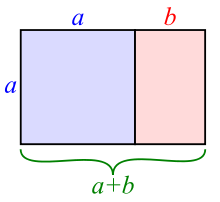Flag of Togo
 | |
| Use | National flag and ensign |
|---|---|
| Proportion | 1∶𝜑 (golden ratio) |
| Adopted | 27 April 1960 |
| Design | Five horizontal stripes alternating between green and yellow; in the canton, a five-pointed white star on a red field |
| Designed by | Paul Ahyi |
The national flag of Togo consists of five horizontal stripes, alternating between green and yellow, with a red canton bearing a five-pointed white star. It uses the pan-African colors of Ethiopia, but the design resembles the flag of Liberia, which itself echoes the flag of the United States, making it part of both the pan-African and Stars and Stripes flag families.
History
[edit]The flag was designed by artist Paul Ahyi and approximates a golden rectangle closely.[1] Ahyi was regarded as among the greatest of African artists of his generation. Born in Togo, Ahyi graduated from the École nationale supérieure des Beaux-Arts[2] in Paris in 1959 and returned to Togo. He designed the flag of Togo while working on other contemporary works.[3] The flag was adopted on 27 April 1960, and is still in use. During France's rule over Togo from 1957 to 1958, the flag of French Togo was used. After Togo's independence, the first Flag of Togo was used from 1958 to 1960.
Symbolism
[edit]The four colors (green, red, white and yellow) are the pan-African colors. They symbolize the following:
- Red represents blood shed by Togo's freedom fighters
- White star represents hope
- Green represents the forests, agriculture, nature, and overall hope for the future
- Yellow represents the natural resources of the country
The five stripes represent the five regions of Togo.
Geometry
[edit]
The flag of Togo is a golden rectangle because its side lengths are in the golden ratio (represented by the Greek letter phi 𝜑). In other words, its width-to-length ratio is 1∶𝜑, where 𝜑 = 1+√5/2 ≈ 1.618034.[4][5] This makes it one of two national flags in current use with an irrational proportion, the other being the flag of Nepal.
Historical flags
[edit]| Flag | Years of use | Ratio | Government | Description |
|---|---|---|---|---|

|
1884–1914 | 2:3 | Togoland Protectorate | The flag of the German Empire was used as the official flag of German Togoland. |

|
1916–1957 | 2:3 | Territory of Togoland | The French tricolor was used as the official flag of French Togoland and, from 1955, the Autonomous Republic of Togo. |
| Autonomous Republic of Togo | ||||

|
1957–1958 | 3:5 | A new flag for Togo was introduced in 1957, consisting of a green field with a French flag in the canton and two five-pointed white stars, one on the lower hoist side and one on the upper fly side. | |

|
1958–1960 | 3:5 | The French flag in the canton of the previous flag was removed in 1958. | |

|
1960–present | 1:φ | Togolese Republic | The current flag of Togo was introduced upon gaining independence from France on 27 April 1960. It consists of five equal horizontal bands of green (top and bottom) alternating with yellow; with a red canton bearing a white five-pointed star. |
Gallery
[edit]See also
[edit]References
[edit]Citations
[edit]- ^ "Flag of Togo". FOTW.us. Flags Of The World. Archived from the original on 7 June 2007. Retrieved 9 June 2007.
- ^ "Paul Ahyi of Togo joins roster of UNESCO Artists for Peace". United Nations. 11 September 2009. Retrieved 12 January 2010.
- ^ "Décès de Paul Ahyi, le Picasso africain" [Death of Paul Ahyi, the African Picasso]. Le Telegramme (in French).
- ^ Posamentier & Lehmann 2011, pp. 53–54.
- ^ Johar 2024, p. 286.
Sources
[edit]- Johar, Syafiq (4 January 2024). "Some Applications of Real Sequences". The Big Book of Real Analysis: From Numbers to Measures. Springer Nature. pp. 263–296. ISBN 978-3-031-30832-1.
- Posamentier, Alfred S.; Lehmann, Ingmar (20 December 2011). The Glorious Golden Ratio. Prometheus Books. ISBN 978-1-61614-424-1.



